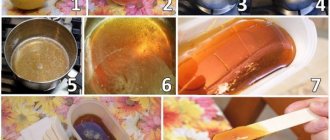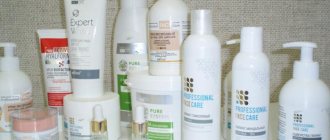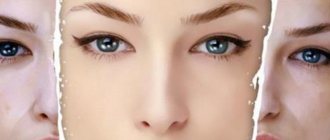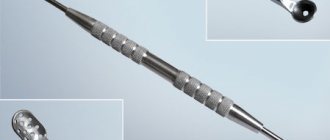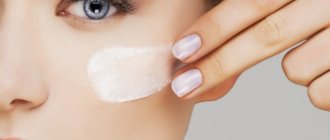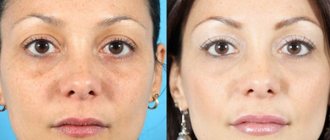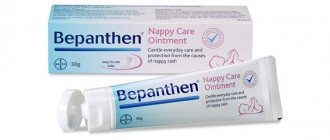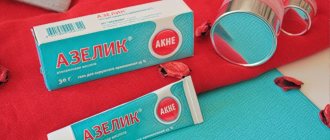Uncomfortable shoes, dust and puddles, constant friction and pressure - the skin on the feet is subjected to serious tests every day.
Foot peeling will help relieve unpleasant odor, calluses, corns and cracks. Ungroomed legs not only look unsightly, but also cause serious discomfort. If an infection gets into the cracks, it will be even more difficult to get rid of them. Therefore, it is necessary to exfoliate non-living cells in a timely manner.
You can get rid of rough crust on your legs using mechanical and chemical peeling. Each of them is made using many different drugs, the difference between them lies only in the method and depth of influence.
Technology
Regardless of the type of procedure, the technology used in each case is approximately the same. Foot peeling is carried out according to the following scheme:
- Treating the foot with an antiseptic.
- Steam them in warm water with the addition of herbal decoctions or essential oils for 20 minutes.
- Removing the first layer of keratinized skin using a special brush or pumice stone.
- Dry your heels thoroughly.
- Applying a foot scrub or a solution of active acids to the skin.
- Rinse off after 20 minutes with warm running water.
- Applying rich cream.
Important! You cannot perform foot peeling if there is any damage to your feet: calluses, cracks or wounds.
Efficiency
Regular foot skin care will help keep it smooth and elastic for a long time. Foot peeling leads to the following results:
- blood circulation improves;
- skin cell regeneration accelerates;
- aging processes slow down;
- small cracks heal;
- fungus of the skin and toenails disappears;
- aesthetic appearance improves;
- All layers of the epidermis, both upper and deep, are nourished.
Foot peeling not only helps to maintain the external beauty of the skin of the feet, but also eliminates fungal diseases and unpleasant odors.
Why do you need peeling?
Every day, people travel long distances on foot or spend hours standing because their jobs require them to do so. We wear uncomfortable shoes made of artificial materials, drink little water, so the skin on our feet is constantly exposed to external and internal influences, which is why it becomes rough. Living skin cells do not receive sufficient nutrition and become covered with a layer of dead epithelium. In this case, peeling comes to the rescue. Its action is aimed at renewing skin cells and cleansing it of growths. Regular exfoliation will help prevent foot fungus, keep your skin youthful, and get rid of unpleasant odor. This procedure is painless and even pleasant.
Proper peeling is carried out in three stages:
- Preparing the surface of the feet. Depends on the type of peeling. In some cases it is necessary to steam the skin, in others it is necessary to treat it with an antiseptic.
- Cleansing the skin of rough epithelium. What is usually called peeling. It is carried out manually, using hardware or a combined method.
- Hydration. After cleansing, apply moisturizer or other care products to your feet.
Composition and features
For foot peeling, compositions containing various acids are used:
- fruit;
- dairy;
- and salicylic.
Each of them is guaranteed to restore elasticity and softness to the skin of the feet. I also use special socks, peeling rolls, scrubs, and peeling creams to care for my feet.
Features of chemical peeling include:
- Delayed result. There will be no effect immediately after the procedure, since the acids gradually start the regeneration process in the skin. Visible changes appear 3–4 days after the procedure.
- During this period, the skin on the feet begins to peel and peel off, as the active phase of epidermal cell renewal begins.
- After 6-7 days, dead particles are completely removed, and the skin on the feet becomes beautiful and soft.
- Chemical peeling for feet is a simple and safe procedure that you can even do yourself at home.
- Mechanical peeling helps with severe roughening of the skin. It can be used in combination with a chemical one.
We recommend: What is facial peeling gel, how to use the cosmetic product? The best brands
READY PRODUCTS FOR THE PROCEDURE
There are many foot exfoliation masks and creams on the market.
The products of Natura Siberica, Algetics Thalasso Cosmetics, masks from Missha and Skinlite Exfoliating Foot Mask are very popular.
Before purchasing, you should carefully study the composition and expected effect: as a rule, chemical peeling for heels does not lead to peeling of the stratum corneum immediately after the procedure.
If the skin has not begun to peel off, there is no need to worry and repeat peeling more often than indicated in the instructions: this can lead to serious damage to the epidermis.
Indications and contraindications
Foot peeling is used as a simple care procedure for the skin of the feet, in order to prevent the appearance of rough growths and cracks, and to get rid of existing problems.
Regular procedures will help make the skin of your feet and heels soft and smooth and maintain this effect for a long time.
The main indications for use are:
- dry flaky skin;
- increased sweating;
- fungal diseases;
- corns;
- small cracks;
- ingrown nails;
- tendency to calluses.
Attention! Like any procedure using chemical acids, foot peeling has a number of contraindications.
These include:
- dermatological diseases;
- open wounds (especially purulent ones);
- oncology;
- pregnancy and lactation;
- diabetes;
- viral diseases accompanied by fever;
- allergy;
- individual intolerance.
Before using a foot peel, be sure to consult a dermatologist.
How to choose shoes if you have problems with the skin of your feet?
- Make sure your shoes don't move around or put pressure on your feet.
- You should not buy sandals, pumps or ankle boots with heels or stilettos with a height of more than 6.25 cm.
- Not only the heel, but also the flat sole has a negative impact. Love for sneakers and ballet shoes can lead to club feet, chronic pain, and deformation of fingers and joints.
- When choosing, make sure that your shoes are not too narrow. In such shoes, the foot is most often subject to friction, which leads to corns and calluses.
The French believe that rough skin on the feet is a sign of laziness. Do not forget about proper care of the most sensitive and less protected areas - clean, nourish and moisturize them daily. Then you will not be bothered by the problems of coarsening of the feet, the appearance of cracks, fungus and other troubles associated with lack of attention to the feet.
Many people believe that natural ingredients are the best way to deal with dryness and flaking. I agree with this, but note: they are especially effective not in those formulations that we make ourselves, but in medicinal cosmetics that have a complex effect:
- Relieving fatigue and feeling of heaviness.
- Intensive hydration and nutrition.
- Increases elasticity and strengthens blood vessels.
- Anti-inflammatory effect.
- Softening particularly rough areas.
- Healing.
I advise you to try liposomal products - they contain plant extracts, oils and vitamins for impeccable lightness of your legs, healthy and soft skin of your feet and heels.
| Problem | Solution | Means |
| Dryness | Avocado oil helps restore dehydrated areas, preventing the appearance of corns. | |
| Roughness and cracks | The vitamin complex with panthenol protects against damage and has a healing and regenerating effect. | |
| Fatigue | Lavender and laurel oils relieve puffiness and relieve the feeling of heaviness. | Pro 225 ml |
Which type of procedure should I choose?
There are quite a few methods of performing the procedure, which allows you to choose the most suitable one for each skin type. All methods have both advantages and disadvantages.
Types of peeling:
- mechanical;
- chemical;
- fish;
- enzyme;
- socks;
- Italian mittens;
- for pedicure.
Reference. Each of them can be used both in the salon and at home.
Chemical (Acid)
The method of chemical peeling involves applying acids to the skin and consists of three stages: preparatory, main and restorative. It is carried out in the following sequence:
- Examine your feet for damage.
- Antiseptic treatment.
- Application of a special composition.
- Washing off.
- Consolidate the result with a nourishing cream.
There are 3 types of chemical peeling for feet:
- surface;
- median;
- and deep.
The first 2 types can be used once a week, deep - once every 2-3 months. The duration of one procedure is no more than 20 minutes.
Important! Do not keep chemical compounds on the skin for more than 15–20 minutes, otherwise you can get a serious burn.
Mechanical
This type of peeling involves exposing the skin to abrasive substances (scrubs), using pumice or a special brush. This helps to quickly get rid of rough skin on the feet and heels.
The salon uses a special device with several types of attachments.
The sequence of actions for mechanical peeling is as follows:
- Examine your feet for damage.
- Steaming in warm water.
- Treatment with exfoliating agents and pumice (apparatus).
- Applying nourishing cream.
To steam your feet before the mechanical peeling procedure, you can use herbal decoctions or aqueous solutions of essential oils.
Fishes
For this peeling, fish of the Garra Rufa family are used, which feed on dead skin particles.
Sequence:
- inspection for external damage;
- removal of cosmetics and decorative varnish;
- washing with neutral soap;
- immersion of feet in a container with fish.
Attention! This type is considered one of the safest and most effective.
The duration of the procedure depends on the number of fish and usually ranges from 15 to 30 minutes.
We recommend: What is bodyaga and how to peel with it? Recipes and recommendations
Enzymatic
In terms of its effect on the skin, enzyme peeling is similar to chemical peeling, but has a more gentle effect.
For the procedure, products containing substances of plant origin are used.
Sequencing:
- Checking feet for wounds.
- Application of the product.
- Wrapping with cling film.
- Removal using wet wipes.
- The procedure should not last more than 20 minutes.
Reference. During enzyme peeling, you should not massage your feet or rinse off the product with running water.
For pedicure
To peel your feet during a pedicure, you can use any type of care procedure. At the same time, it will include not only the treatment of the skin with special means, but also the correction of nails and the application of decorative varnish.
Socks and Italian mittens
One of the most popular means for peeling at home is special socks. Each kit contains 1 pair of polyethylene socks, instructions for use and a treatment solution containing plant components and active acids.
Sequence of peeling using socks:
- Do an allergy test. Apply a small amount of product to the foot for 5 minutes. If no rashes or redness appear, then you can safely use it for the procedure.
- Put on socks.
- Pour peeling agent into each of them.
- Secure the socks using special fasteners.
- After an hour, wash off the product with warm running water using neutral soap.
The regeneration process will begin only 5 days after the procedure, so you should not immediately expect a visible effect. You can exfoliate your feet using a sock only once every 3 months.
To gently cleanse your feet, you can use Italian mittens, procedures with which can be carried out daily. To do this, first massage with mittens dry (5-10 minutes), then while washing. After the procedure, you need to apply moisturizer to your feet.
TYPES OF EXFOLIATION FOR FEET
- During mechanical treatment,
keratinized cells are removed by friction. In this case, scrubbing cosmetics are used, as well as accessories - files and graters; - Chemical peeling
is effective due to the effect of various acids on the dermis. To carry it out, preparations with acids of various concentrations are used, the depth and effectiveness of the procedure depends on this.
The choice of salon types of exfoliants for feet is wide. Only with the help of a specialist can you perform hardware peeling, as well as cleansing with Garra Rufa fish.
In salons, it is recommended to carry out deep and medium chemical exfoliation - the wrong selection of the drug and acid concentration can cause a serious burn, so they should be prescribed by a cosmetologist.
How to do it at home?
Foot peeling at home can be done using both chemical compounds and natural remedies prepared independently.
Stages of implementation
Important! The sequence of actions when carrying out the procedure at home is the same as in the salon.
Stages of implementation:
- Preparatory. It consists of steaming your feet in warm water with the addition of a decoction of herbs or essential oils.
- Basic. Application of a special product.
- Final. Care with moisturizing, nourishing creams and oils.
Before carrying out the procedure at home, you must do a test for an allergic reaction.
The best recipes for feet and heels
Natural products help remove dead skin particles and restore its elasticity and smoothness no less effectively than chemicals.
We recommend: What is peeling-gommage? Features of the procedure for face and body at home
Bath with laundry soap and soda
Mode of application:
- Mix soda and soap, grated on a coarse grater, in proportions 1:1.
- Pour hot water into a deep container and add the solution there.
- Lower your feet for 35–40 minutes.
- Clean your heels with a pumice stone or a special brush.
- Dry them well.
- Apply nourishing cream.
With sea salt and coffee
Mode of application:
- Combine coarse coffee and sea salt in 1:1 proportions.
- Add 25-35 ml of vegetable oil.
- Steam your feet in hot water.
- Apply the composition to the heels with massage movements.
- Rinse off with warm water.
With sea salt and tomatoes
Mode of application:
- Mix the pulp of one tomato with 1 tbsp. l. sea salt.
- Steam your feet in hot water with added essential oil.
- Apply the mixture to your heels.
- Massage them.
- Rinse off with warm water.
- Apply moisturizer.
From citrus fruits
Mode of application:
- Peel any citrus fruit and grind in a meat grinder along with the peel.
- Apply the paste to your feet for 10–15 minutes.
- Rinse off.
- Lubricate your heels with a nourishing agent.
Attention! Homemade foot peeling can be used for any skin condition, even very advanced ones.
The great advantage of folk recipes is that they can be used much more often than salon procedures.
Acid peeling for feet “pedicure socks”
An alternative to salon treatments is to wear special pedicure socks. The product is made of transparent film, inside there is a gel based on lactic, hyaluronic acid, and squalane. Long-term use of pedicure socks will make the skin on your feet more elastic, soft, and nutrients will reach the deep layers of the epidermis.
To use acid peeling, adhere to the following algorithm of actions:
- wash your feet thoroughly with warm water, clean your heels and toes with pumicite;
- take out the bag with socks and fill them with liquid gel, which is included with the product;
- carefully lower the feet into pedicure socks, tie them, and insulate them on top;
- wear for the time indicated on the instructions;
- After removal, wash your feet with hot water and complete the procedure.
Precautions and commercial remedies
Before carrying out the foot cleansing procedure, it is necessary to study all contraindications and conduct a test for an allergic reaction. In order to get the maximum effect from peeling, you must follow all stages of the procedure.
You should not do foot peeling (especially chemical peeling) if too little time has passed since the previous procedure. For sensitive skin prone to irritation, it is best to use gentle products.
For peeling at home, it is best to use pharmaceutical preparations. They are much cheaper than those used by salons, but no less effective.
The best pharmaceutical drugs include:
- My Nail Callus Remover. Preparation with fruit glycolic acid.
- SpaRedi Callus Remover. A product designed for deep peeling.
- Natura Siberica, “Skin renewal and softening.” Cream for complex care.
- “Granny Agafya’s recipes”, “Softening foot peeling”. A product made from natural plant substances.
- Bielita Ultra Foot Care. Chemical peeling with lactic acid.
- PNB Pro Pedicure Callus Remover. A product that is used both in the salon and at home.
- Pedicure socks Shary Magic Foot Peeling. The drug is based on lactic acid and natural plant components.
Foot peeling is as important a skin care procedure as any other. It helps rid the feet of dead skin cells and restore elasticity and beauty to the skin. The main condition for its implementation is compliance with all rules and precautions.
Removing rough skin: advice from cosmetologists
In conclusion, we want to give some tips that will help maintain the beauty and health of your feet.
- Use orthopedic insoles and forget about tight shoes that don’t allow your feet to breathe.
- Wear cotton socks even at home, and try not to walk barefoot.
- Throw away synthetic socks that interfere with normal thermoregulation.
- Do not use professional pedicure razors unless you have experience.
- Moisturize your feet daily and give them a proper spa every week.
Using the promotional code BLOG, all products from the article receive a 25% discount. Give your legs a day off!
